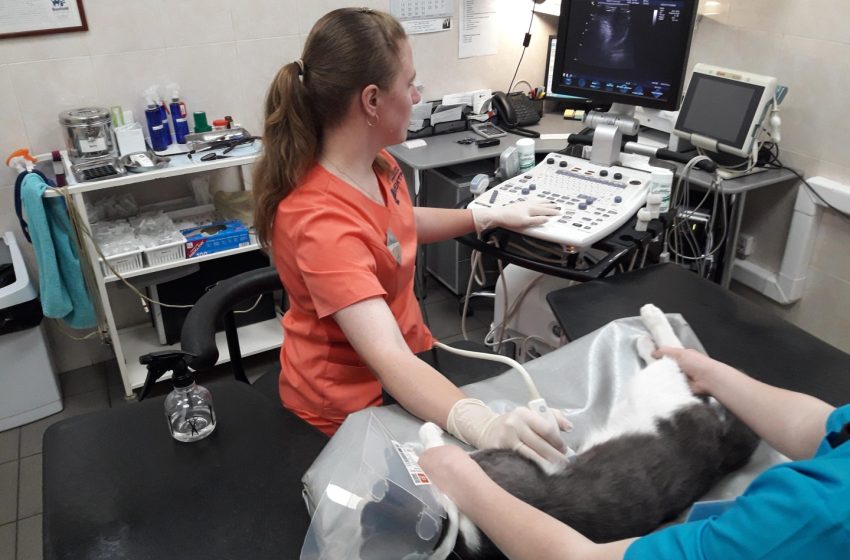The Latest Innovations in Veterinary Ultrasound Technology

Veterinary ultrasound technology has evolved into an indispensable tool in modern veterinary medicine, empowering veterinarians with a non-invasive and highly effective way to diagnose and monitor various animal conditions. The advancements in veterinary ultrasound have not only enhanced its diagnostic capabilities but also instilled a sense of confidence and capability in veterinarians. This article delves into the latest innovations in veterinary ultrasound technology, exploring how these advancements revolutionize animal healthcare and improve patient outcomes.
The Evolution of Veterinary Ultrasound
Early Beginnings
Veterinary ultrasound was introduced several decades ago, primarily adapted from human medical technology. Early veterinary ultrasound devices were bulky, limited in imaging quality, and required significant expertise. Despite these limitations, they provided veterinarians with a valuable tool for internal imaging, particularly in diagnosing pregnancy, abdominal conditions, and cardiac issues.
Advances in Imaging Quality
As technology progressed, so did the quality of veterinary ultrasound machines. Improved resolution, Doppler capabilities, and real-time imaging have significantly enhanced the ability to diagnose various conditions more accurately. These advancements have also allowed for more detailed visualization of soft tissues, making it easier for veterinarians to detect abnormalities that might have been missed with earlier technology.
Recent Innovations in Veterinary Ultrasound
Portable and Handheld Devices
The development of portable and handheld devices is one of the most significant innovations in veterinary ultrasound technology. These compact and lightweight machines offer the same high-quality imaging as traditional, larger units but with the added benefit of mobility. This portability not only brings convenience but also reduces the stress of transporting animals to a clinic, especially in field settings. The mobility of these devices is essential for large animal practices, equine medicine, and emergency care, ensuring quick and efficient diagnostics.
3D and 4D Imaging
The introduction of 3D and 4D imaging has significantly advanced veterinary ultrasound technology. These imaging techniques provide a more comprehensive view of internal structures, allowing for better assessment of complex conditions. 3D imaging, with its detailed, three-dimensional images, is particularly useful in surgical planning and tumor evaluation. Meanwhile, 4D imaging, with its real-time video of moving organs, offers critical insights during pregnancy monitoring or cardiac assessments.
Doppler Ultrasound
Doppler ultrasound is another crucial innovation in veterinary ultrasound technology. This technique measures the flow of blood or other bodily fluids, providing vital information about cardiovascular health, blood flow in organs, and vascular conditions. Doppler veterinary ultrasound is especially useful in diagnosing heart conditions, monitoring blood flow in limbs, and assessing the function of organs like the kidneys and liver. The ability to visualize and measure blood flow in real time has greatly enhanced the diagnostic capabilities of veterinarians.
Contrast-Enhanced Ultrasound (CEUS)
Contrast-enhanced ultrasound (CEUS) is an advanced technique that uses contrast agents to improve the visibility of blood vessels and organ structures during an ultrasound. This innovation in veterinary ultrasound allows for more precise imaging, particularly in cases where traditional ultrasound might not provide sufficient detail. CEUS is especially useful in oncology, where it helps differentiate between benign and malignant tumors by highlighting blood supply differences. Additionally, it aids in the diagnosis of liver, kidney, and spleen conditions by enhancing the contrast between healthy and diseased tissues.
Telemedicine Integration
Integrating veterinary ultrasound with telemedicine platforms is a significant advancement that has broadened the accessibility of expert consultations. With telemedicine, veterinarians in remote locations can perform ultrasound scans and transmit the images in real-time to specialists worldwide. This capability is precious in complex cases where a second opinion is required. The combination of veterinary ultrasound and telemedicine ensures that animals receive the best possible care, regardless of geographical barriers.
Innovations in Veterinary Ultrasound Software
AI-Assisted Diagnostics
Artificial intelligence (AI) has made significant inroads into veterinary ultrasound technology, particularly in diagnostics. AI algorithms can now analyze ultrasound images and provide preliminary assessments, a crucial advantage in busy practices where time is of the essence. This technology not only aids in quick and accurate assessments but also provides guidance for less experienced veterinarians, ensuring that critical conditions are noticed.
Cloud-Based Data Storage and Sharing
Cloud technology has revolutionized the way ultrasound data is stored and shared. With cloud-based systems, veterinarians can securely store and access veterinary ultrasound images anywhere. This is particularly useful for practices with multiple locations or veterinarians needing to consult with specialists remotely. Cloud storage also facilitates long-term patient health tracking, as images and data can be easily retrieved and compared over time.
Advanced Image Processing Software
Recent advancements in image processing software have further enhanced the capabilities of veterinary ultrasound machines. These software tools allow for manipulating and improving ultrasound images, providing more precise and detailed views of internal structures. Features such as noise reduction, image smoothing, and enhanced contrast make it easier to detect subtle abnormalities. Advanced image processing also allows for better post-scan analysis, enabling veterinarians to review images more thoroughly and make more informed decisions.
Application of Veterinary Ultrasound Machines in Practice
In the field, the practical application of these advancements is evident in various veterinary specialties. For instance, in reproductive medicine, portable and high-resolution veterinary ultrasound machines enable precise monitoring of pregnancies and early detection of complications. These machines also play a crucial role in emergency care, where the ability to perform quick, accurate diagnostics can be life-saving.
When considering the acquisition of veterinary ultrasound machines, it is essential to evaluate the practice’s specific needs. For example, equine veterinarians may prioritize portability and robust imaging capabilities, while small animal practitioners might focus on advanced imaging features like 3D and Doppler ultrasound. The latest veterinary ultrasound machines offer a range of options tailored to different specialties, ensuring that veterinarians can choose the best equipment to meet their diagnostic needs.
Future Directions in Veterinary Ultrasound Technology
Personalized Veterinary Care
As veterinary ultrasound technology continues to evolve, we can look forward to further advancements that contribute to personalized veterinary care. Innovations such as AI-driven diagnostics and telemedicine integration will enable veterinarians to tailor treatments to individual animals, considering their unique physiology and health history. This personalized approach not only improves outcomes but also enhances the overall quality of care, giving us hope for a brighter future in veterinary medicine.
Education and Training
The rapid advancement of veterinary ultrasound technology also necessitates ongoing education and training for veterinarians. As new tools and techniques become available, continuing education programs will be essential to ensure veterinarians can fully utilize the latest innovations. Virtual training modules, webinars, and hands-on workshops will likely become more prevalent, helping veterinarians stay up-to-date with the latest developments in the field.
Conclusion
The latest innovations in veterinary ultrasound technology are revolutionizing the animal healthcare field, offering unprecedented diagnostic capabilities and improving the quality of care. These advancements, from portable devices and advanced imaging techniques to AI-assisted diagnostics and telemedicine integration, make veterinary ultrasound more accessible, accurate, and efficient. As technology continues to evolve, veterinarians will have even more powerful tools, enabling them to provide the best possible care to their patients. For practices considering upgrading their equipment, investing in the latest veterinary ultrasound machines is a critical step toward embracing the future of veterinary medicine.



